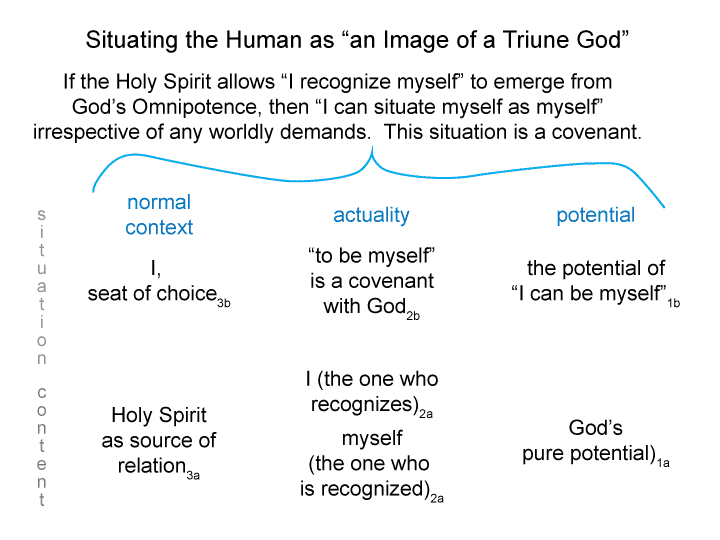Man and Sin by Piet Schoonenberg (1964) 2.1BP1
[Indeed, only one Possibility supports the diverse appearances of God’s dyadic Actuality.
Each actuality is contiguous with the other. Both (the dyad itself) stand in relation to the realm of possibility. That Relation is also a Person. That relation is the Third Person.
God Is Three means that “the recognition itself exists as a triadic relation”. Recognize (maybe there should be an exclamation point) is the third Person of the Trinity.
“The One Who Recognizes2” and “The One Who Is Recognized2” are “in Relation3 with “the Possibility of Recognition1”.]

